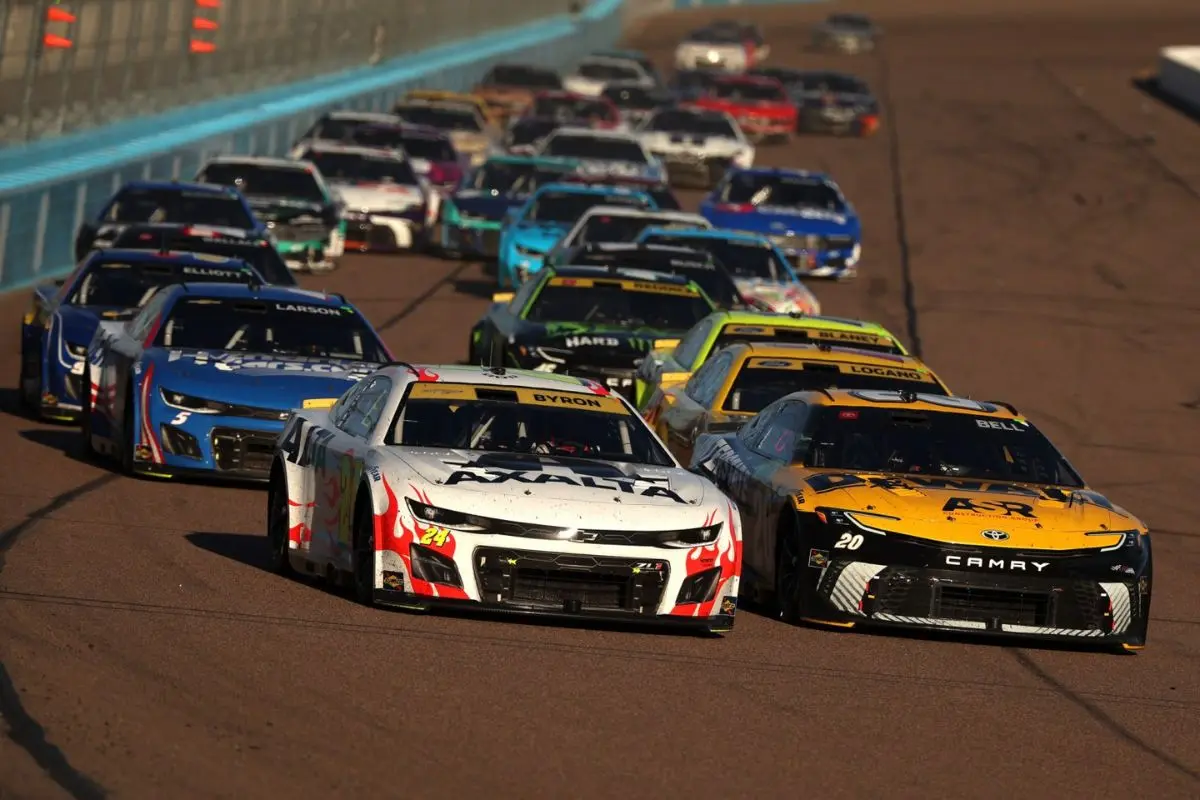NASCAR has shifted from guesswork to precision as simulators and data analytics reshape how teams prepare for every race weekend. What once relied on trackside intuition and limited test sessions has evolved into a technology-driven process where virtual laps and real-time telemetry define success. From car setup to driver development and split-second strategy calls, modern NASCAR teams are rewriting the rules of preparation. The sport’s digital transformation continues to grow, giving drivers and crews tools that were unimaginable a decade ago.
Key Highlights
-
Simulators now replicate every NASCAR track with laser accuracy, allowing drivers to practice virtually before race day.
-
Data from over 60 sensors per NextGen car generates 600,000 messages per second during races.
-
Telemetry helps teams anticipate issues, refine setups, and make strategy decisions based on live and historical data.
-
Drivers like William Byron credit simulation for building skills long before entering a real race car.
-
NASCAR shares over 1.3 TB of live data with fans during Cup races, enhancing engagement and transparency.
Simulators: A Virtual Training Ground
Modern simulators go far beyond video games, offering professional-grade platforms costing upwards of $50,000. Equipped with high-resolution displays, force-feedback steering, and detailed physics models, they mirror the exact feel of a NASCAR cockpit. Software like iRacing delivers precise laser-scanned tracks, allowing drivers to rehearse every corner before race day. These tools save teams from expensive, time-limited test sessions while offering countless scenarios to practice.
Drivers and engineers use simulations to test setup changes virtually, ensuring that real-world adjustments are based on data-backed performance projections rather than trial and error. William Byron’s journey highlights the impact of sim technology. Starting his career on iRacing, he built the racing instincts that later propelled him to a Daytona 500 win. Today, he still relies on simulators to fine-tune his approach for unfamiliar circuits, proving that virtual racing has become essential to modern driver preparation.

Data: The New Fuel for Race Day Decisions
Telemetry data has transformed NASCAR’s decision-making. With more than 60 sensors on each NextGen car, teams receive streams of information on speed, braking, tire degradation, and engine health—up to 600,000 messages every second. Engineers analyze this flow in real time, quickly identifying mechanical issues or optimizing fuel and tire strategies. Pit calls, once based on experience alone, now blend intuition with data-driven algorithms predicting outcomes across various scenarios.
The data doesn’t just guide the team’s decisions; it builds a feedback loop for drivers. By comparing telemetry from practice, qualifying, and simulations, drivers learn precisely where they gain or lose time, sharpening racecraft in measurable increments.
Strategy and Execution in the Digital Era
Race strategy has become a high-tech chess match. From the pit box, crew chiefs track rivals’ data alongside their own cars, modeling multiple race outcomes instantly. Should they pit under caution or stay out for track position? How will a two-tire stop compare to four tires over the next 20 laps? These questions are answered through predictive analytics rather than guesswork.
Real-time dashboards even highlight the effects of tiny changes to suspension or aero balance, letting teams adapt as track conditions evolve. The approach can mean the difference between winning and finishing mid-pack in a sport where tenths of a second decide results. The integration of simulators and analytics has tightened the margins, making preparation a science and execution more consistent under pressure.

A More Connected Experience for Fans
The technological revolution isn’t confined to teams. NASCAR now streams over 1.3 terabytes of live data during every Cup Series race, giving fans access to the same information teams rely on. From custom leaderboards to onboard telemetry, viewers can follow strategies and performance metrics in real time. This transparency brings fans closer to the action, offering insights once limited to pit boxes and engineering rooms. As the sport evolves, this connection deepens appreciation for the precision driving and decision-making behind every lap.

News in Brief: Role of Simulators and Data in NASCAR
Simulators and data analytics are redefining NASCAR, moving teams from trackside guesswork to precision engineering. Virtual tools replicate every circuit, helping drivers like William Byron sharpen skills and prepare for race day. Telemetry streams from NextGen cars deliver 600,000 messages per second, enabling data-driven pit calls and mechanical insights. Strategy, once instinctual, now relies on predictive modeling for every decision. NASCAR also shares 1.3 TB of live data with fans, creating a more connected, informed viewing experience.
ALSO READ: NASCAR Fans React to Recent Changes in Charlotte Roval Dynamic

